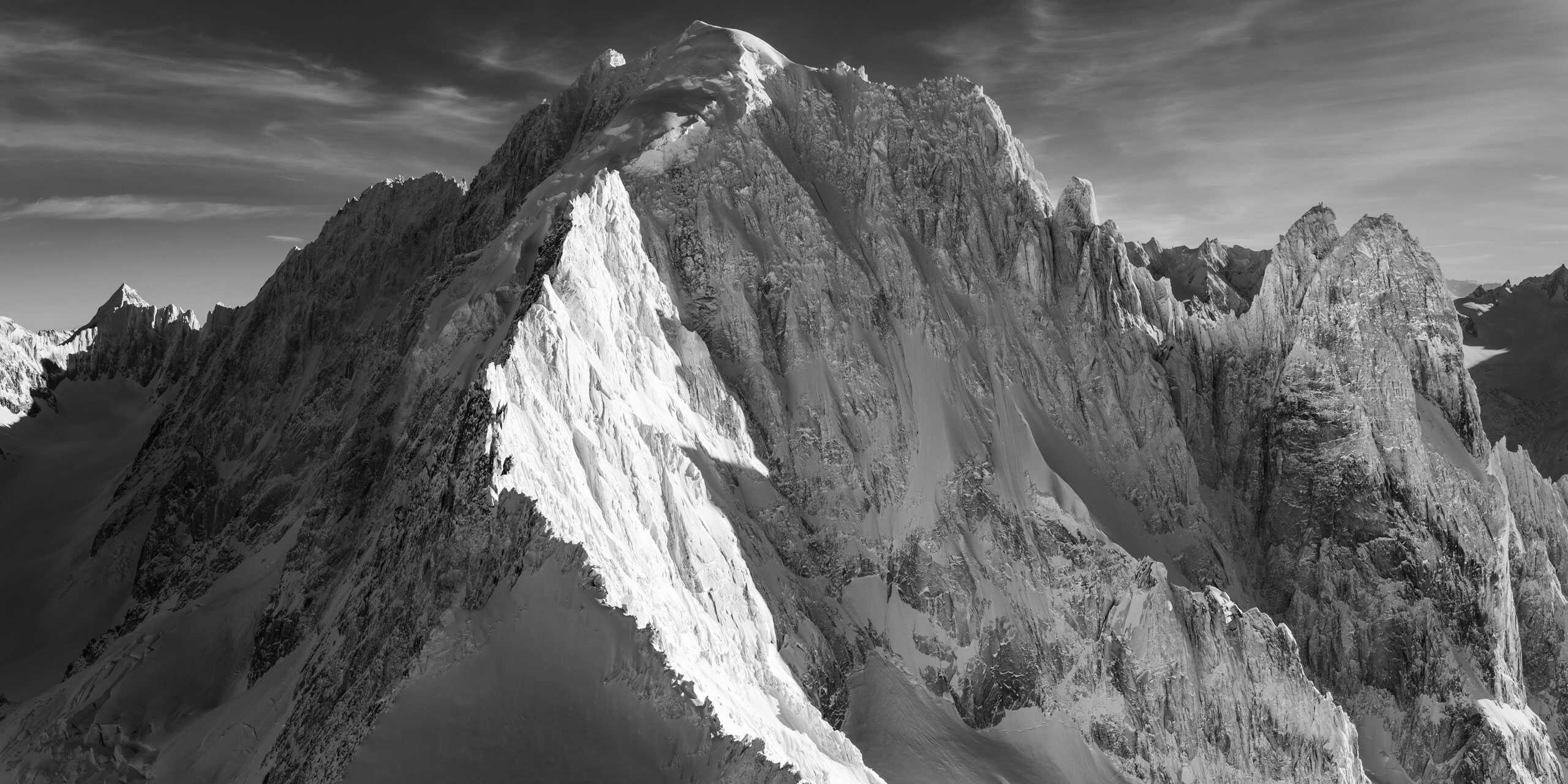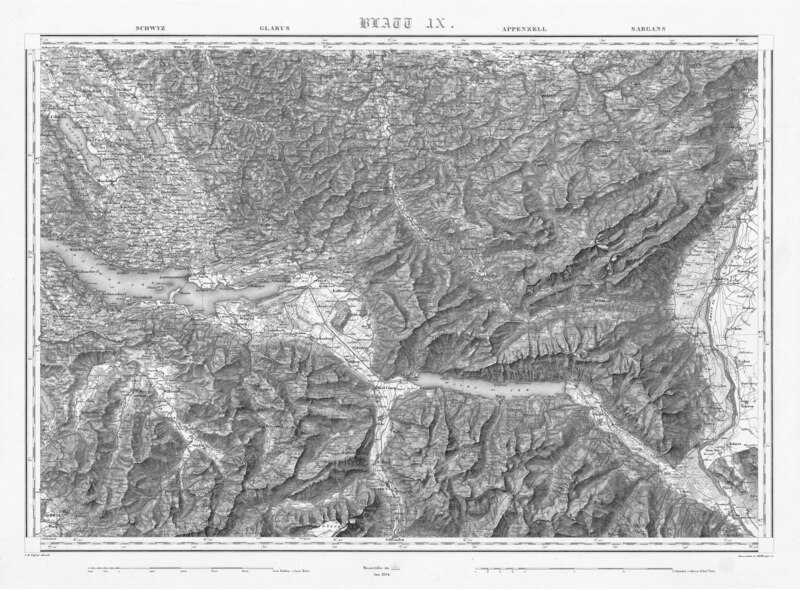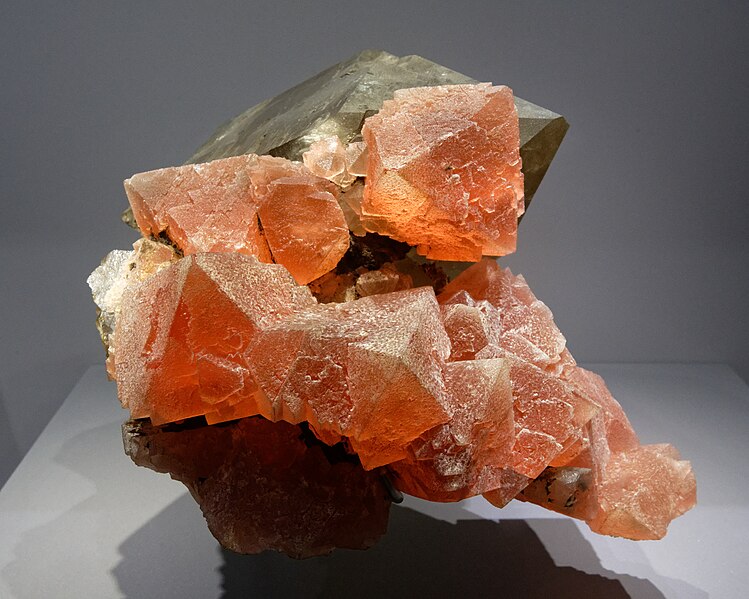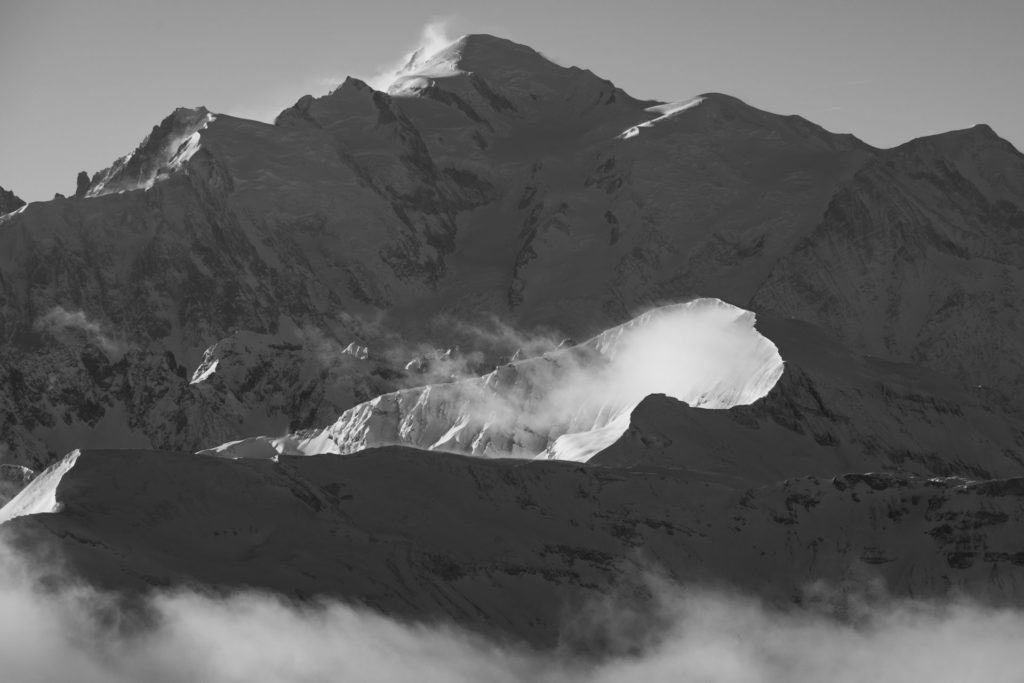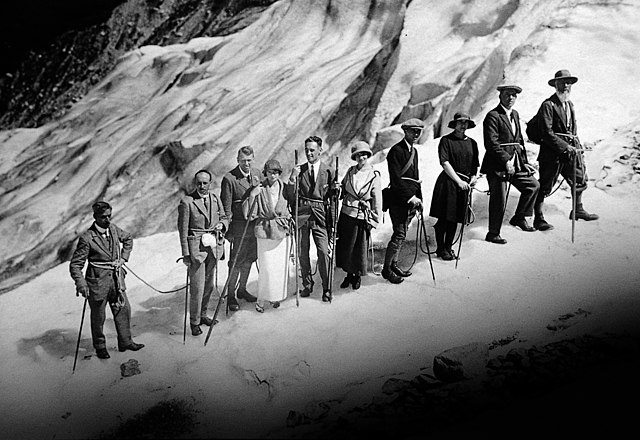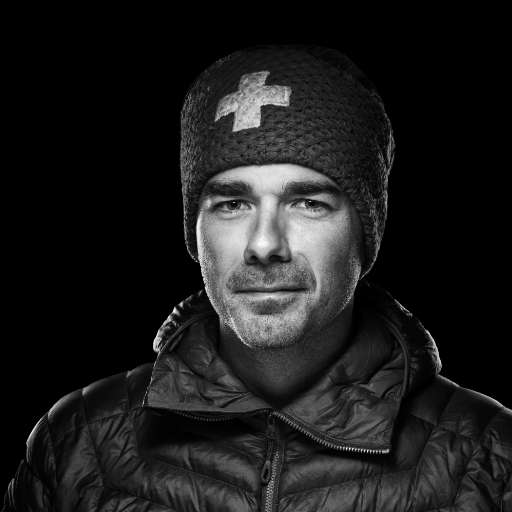By turns journalist and war correspondent, mountain guide and mountaineer, explorer and writer. Who is this man who defies life to resist him? Insatiably curious, in love with man and nature, nothing seems to stand in the way of his desires. A trailblazer and visionary, he was one of the first. Discover the story of a legend of the Alps and beyond, Roger Frison-Roche, a modern-day adventurer.
Roger Frison-Roche: Birth of a modern-day adventurer
Roger Frison-Roche was born on February 10, 1906 in Paris, in the brasserie run by his parents. Originally from Beaufort-sur-Doron, the Savoyard couple had gone into exile a few years earlier. Landless and destitute, they found refuge in the capital, but never forgot their roots.
Roger grew up as a nomadic child, driven by a vital need to return to his roots. In summer, he worked with his uncle in the hay fields above Beaufort. The green valleys and steep mountains, the joyful laughter of his dear cousins. He feels right at home. And when he looks up, he begins to dream of Mont Blanc piercing the horizon. This vision obsesses him, never leaving his side. Yet he must continue on his way. To earn his living, he became a bellhop at Thomas Cook, then an interpreter for the Touring Club de France. Until one day, in the Bois de Boulogne sky, he spotted a cloud that looked like a mountain. He knew then that his destiny was calling him. The time had come for Roger Frison-Roche to reach the Alps.
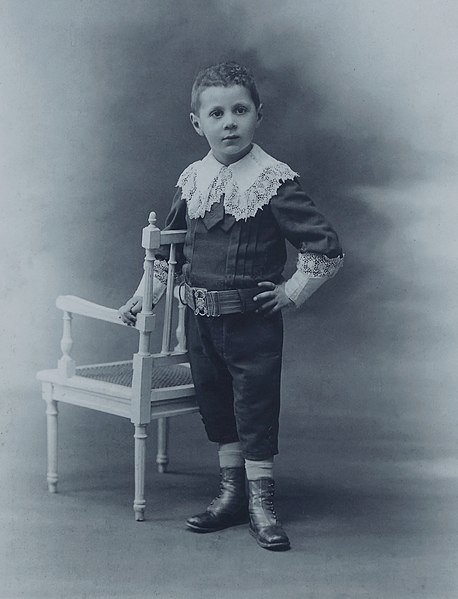
Roger Frison-Roche: Committed journalist and war correspondent
Roger Frison-Roche sees life as a promise. From an early age, he was committed to just causes and the truth. In 1924, he took his first steps as a journalist for the magazine Le Savoyard de Paris. After completing his military service in Grenoble, with the 93rd mountain artillery regiment, he founded the Chamonix branch of Le Petit Dauphinois in 1928, adding a ski section to the paper.
In 1932, as a reporter for Radio Lyon-la-Doua, Roger Frison-Roche made telecommunications history. A hero of his time, he took part in the first radio broadcast from summit du mont Blanc. Of this event he would later say: " I'm talking to them from the top of Mont Blanc! Those few minutes are like a hole in my life, so unreal were they.
In 1938, he moved with his family to Algiers. For four years, he worked at La Dépêche algérienne. Then war broke out, conflicts escalated and he could no longer stand idly by. So, in 1942, he joined the Tunisian front and became a war correspondent working alongside the Allied forces. Up close to the violence, he witnessed the drama and cruelty of a world that no longer made sense. When, a few months later, fate plays tricks on his audacity. Captured by the German enemy, he was locked up and sentenced to death. In the shadow of his cell, he is consumed and afraid, but he persists in believing. To believe in his future and in humanity. This man was not born to give up. And, as if by a miracle, heaven comes to his aid. With the help of an influential friend in the Vichy government, he obtained papers and managed to escape in 1943. Once free again, he went underground and joined the Savoyard maquis in their struggle. Roger Frison-Roche became a liaison officer with the FFI before joining the staff of the5th half-brigade of Alpine chasseurs. It was from this period that the idea for the novel Les Montagnards de la nuit was born, which he published in 1968.
Then the war came to an end, and our journalist was finally able to return to his family in Algiers. Throughout Europe and Africa, he multiplied his reports to bear witness to a world in reconstruction. And when conflict broke out in Algeria, he moved to Nice and joined the Nice-Matin team in 1955. Thirty years of investigating, reporting and taking risks. But Roger Frison-Roche took his globe-trotting vocation one step further. Adventure has many other facets, and one of them is in the mountains.
Roger Frison-Roche: Alpinist and mountain guide
Roger Frison-Roche was just 17 when he moved to Chamonix in 1923, at a time when the village was in full swing. A few months later, in 1924, it hosted the very first Winter Olympics. It was impossible for this lover of the Alps not to take part! He was appointed secretary of both the Tourist Office and the Olympic Committee. At the heart of the action, he raced in the mountains, climbing the Aiguille du Grépon and the Aiguille du Moine. He made his first solo ascents, but also joined the expeditions of the greatest mountaineers. On September 1, 1925, Joseph Ravanel, known as "le Rouge", chose him as a porter to accompany him to summit on Mont Blanc. He was also a keen winter sportsman. His lanky silhouette became familiar to Chamoniards, who nicknamed him "Grand Sifflet" or "Frison". In just a few months, Roger Frison-Roche had captured the hearts of the Alps and its inhabitants.

1928 was an exceptional year for him. The day he met skier Marguerite Landot, his life changed forever. She became his wife, the mother of his children, and they never parted again. That same year, he took over the management of the Syndicat d'initiative and the Comité des sports d'hiver at Chamonix, and with Alfred Couttet set up the Gaillands climbing school. Alongside Armand Charlet, he also organized the first winter ascent of the Aiguille de Bionnassay.
Roger Frison-Roche was radiant with joy, yet always aspired to more. And his dream became reality when, in 1930, he was admitted to the Compagnie des Guides de Chamonix. The exiled Savoyard couldn't believe his eyes! The valedictorian of his class, he made history by becoming the first non-Chamonix to join the ranks of the brotherhood. The feat was unprecedented, and paved the way for other distinctions to follow.
In 1931, he became secretary of the Chamonix-Mont Blanc flying club. And in 1933, he became the first ski instructor to be officially certified by the French Ski Federation. Throughout his career, Roger Frison-Roche remained a leading figure in alpine life. Between 1958 and 1965, he chaired the Syndicat national des guides de France (SNGM). Then, in 1965, he helped found the Union Internationale des Associations de Guides de Montagne (UIAGM), of which he was president until 1969. In 1974, he became a member of the Académie des sciences, belles-lettres et arts de Savoie. In 1992, he was awarded the Légion d'honneur.

Roger Frison-Roche: World explorer
For Roger Frison-Roche, exploring the world was not limited to the borders of the Alps. A guide on the French alpine expedition to the Hoggar, he reached the Sahara in 1935. Alongside Captain Raymond Coche, he made the first ascent of Garet el Djenoun. This fabulous expedition inspired his first book, L'appel du Hoggar, published in 1936. Then, in 1937, he crossed the Grand Erg Occidental in the Algerian Sahara by camel. Alone with Albert Plossu in the heart of 80,000 km2 of arid dunes. He did it again in 1950, crossing 1,000 km of the Sahara by camel with George Tairraz. The film Le grand désert, which followed on from this adventure, marked the start of his career as a lecturer.
In 1955, he crossed the Sahara in a 2CV from Algiers to Niamey, then decided to change course. From the scorching desert of Africa, he headed for the eternal ice of the Far North. In 1956, he left for Lapland with Jacques Arthaud for the filming of Ces hommes de 30 000 ans. Between 1966 and 1969, he undertook several expeditions to the Canadian Far North and North America. Roger Frison-Roche is an adventurer wherever the winds take him. Driven by his passion for nature and people, all he wants to do is understand, discover and get closer to what's essential. He wants to get closer to what's essential, to explore the human being, here and elsewhere, to simply love him better.

Roger Frison-Roche: Writer and author of First of the rope
Enriched by his travels and his exploits, Roger Frison-Roche began writing. After publishing his first novel, L'appel du Hoggar, in 1936, he brought his masterpiece to life in 1941. Premier de cordée appeared as a serial in La dépêche algérienne, before being published by Arthaud a few months later. The success was immense, and the triumph worldwide. A bestseller selling over 3 million copies, this hymn to the mountains is a tribute to self-transcendence and tenacity. It is also a way for the author to encourage the French to keep hope alive in the dark hours of war and occupation. The novel's ultimate consecration came in 1943, when Louis Daquin brought it to the screen. Premier de cordée became a trilogy when he wrote La grande crevasse in 1948, followed by Retour à la montagne in 1957. Roger Frison-Roche's last foray into the limelight was to take a close look at the adaptation of these three books for television in 1999, shortly before he passed away.
In 1981, the author finally published his autobiography, Le versant du soleil. Roger Frison-Roche was now at summit . He enjoyed a formidable international reputation. And yet... In the twilight of his life, he sometimes regrets being trapped in a straitjacket from which he cannot escape. He who, all his life, defied limits and pushed back frontiers. He who has never ceased to defend the freedoms of all, the respect of all. It's all too much for him. And when he spoke to Jacques Chancel on Radioscopie that year, he said: " I have the feeling I've been forgotten. Forty years in the business, a dozen successful novels, one of which is on the school syllabus, titles translated into every language, millions of copies sold. And I've never won a prize." So, is a mountaineer necessarily confined to climbing alone? Is a journalist obliged to report? Can't an explorer also become an artist? Roger Frison-Roche's career path bears witness to the contrary.
Leaving, coming back and telling stories, that's all there is to it. In 1960, Roger Frison-Roche moved to Chamonix with his wife. On December 17, 1999, he left this world as he entered it, in the warmth of a café. But this time, he was at home, close to the mountains, at the foot of Mont Blanc. His exile comes to an end, but the brilliance of his work will continue to dazzle us for a long time to come.
